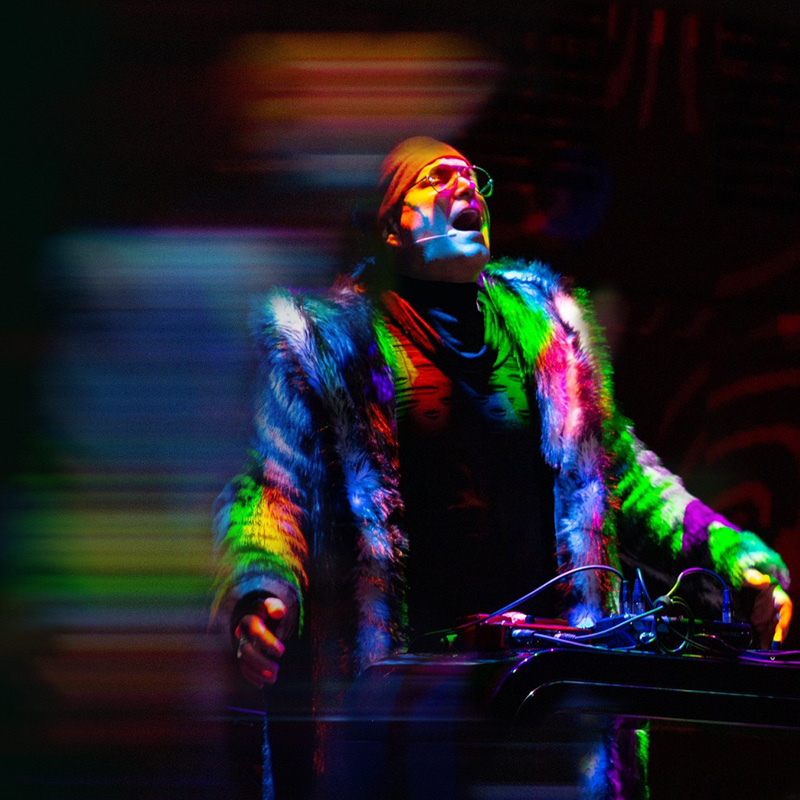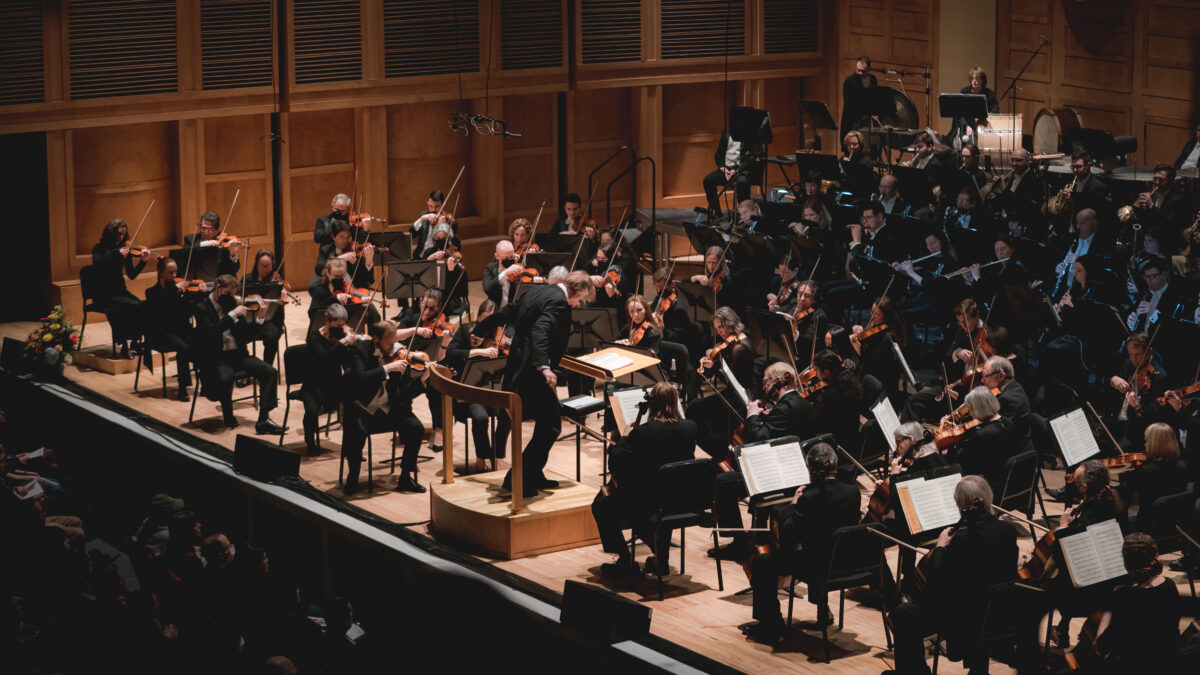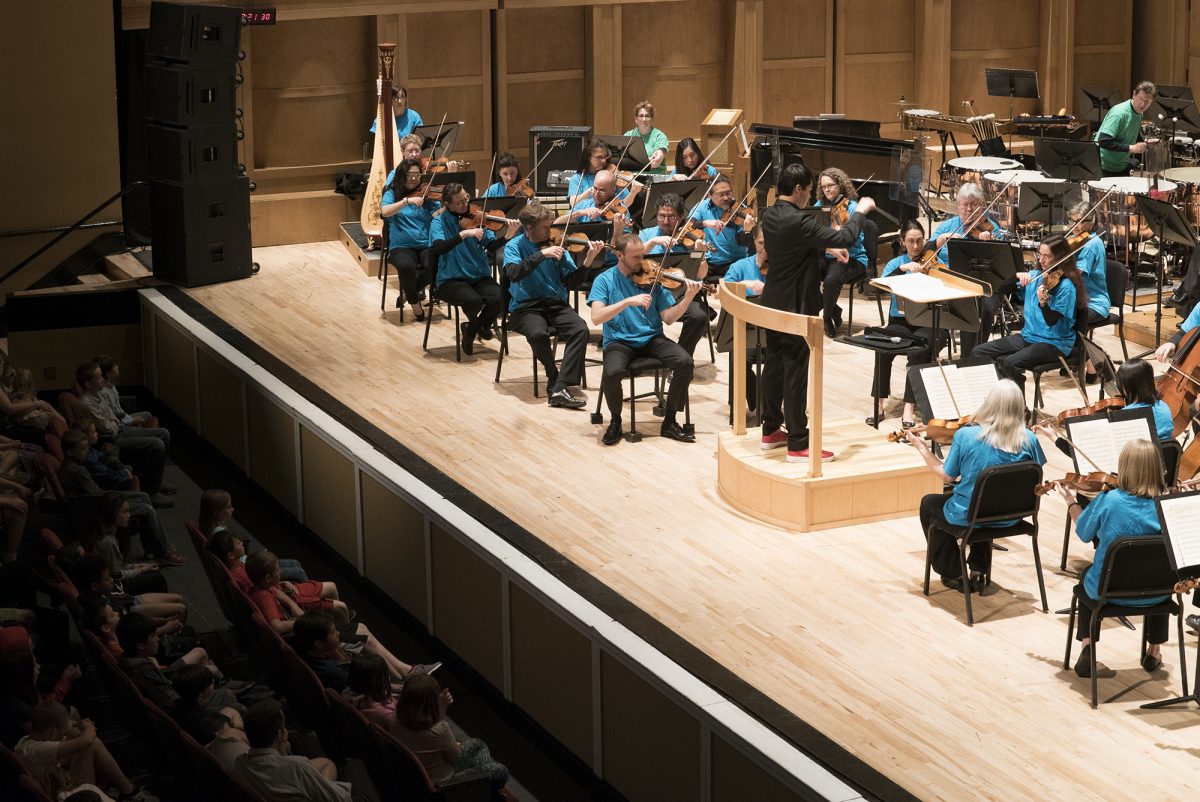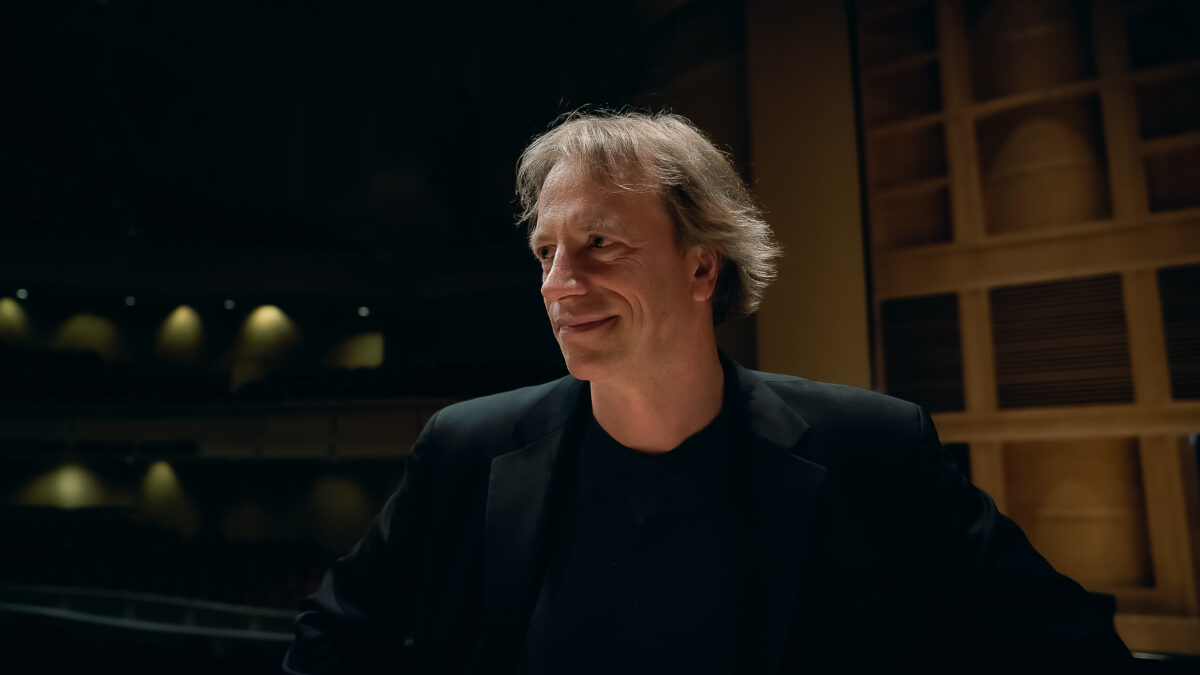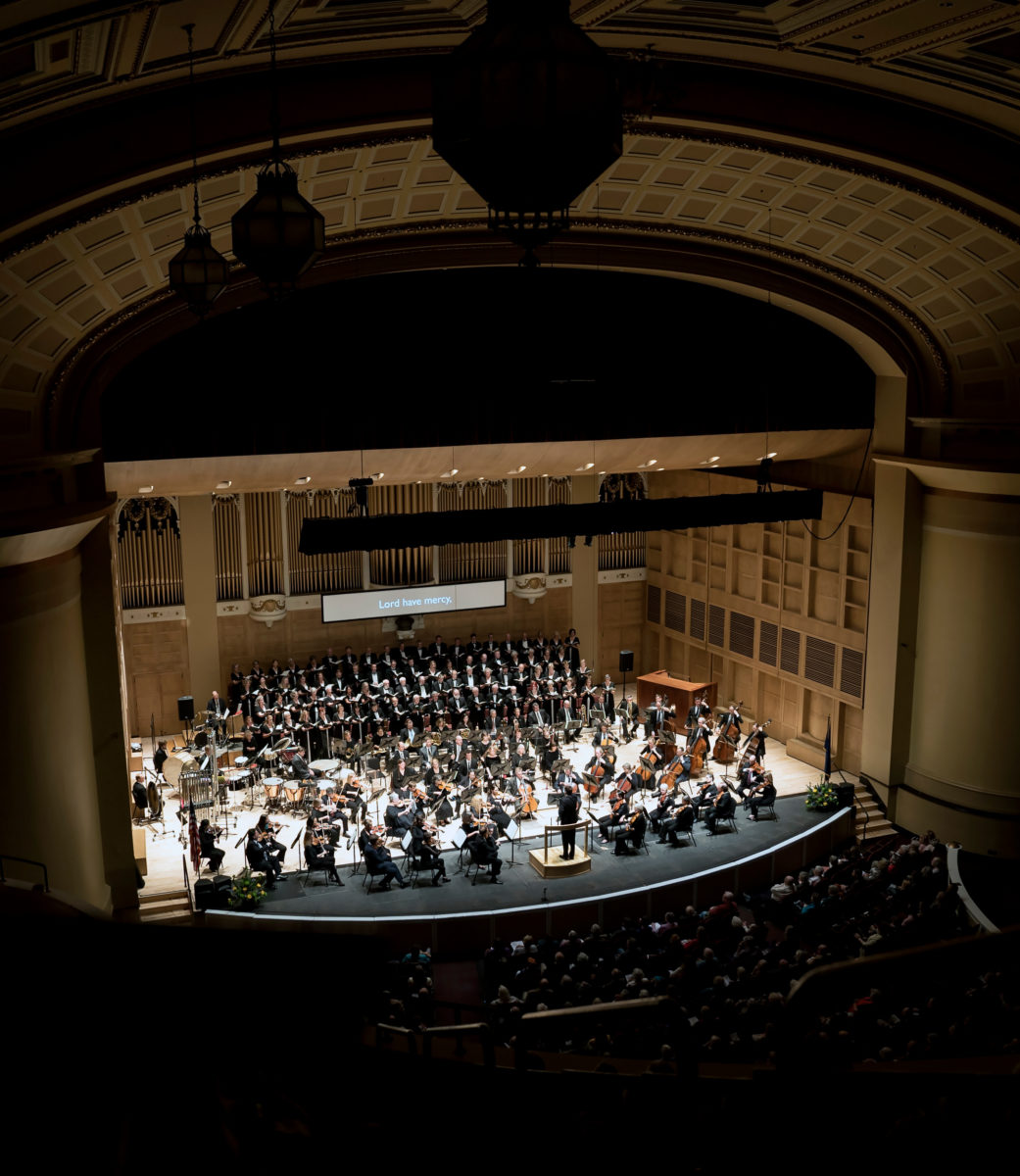Beethoven’s 9th Program Notes
Anna Clyne
Quarter Days
Anna Clyne was born in London, England on March 9, 1980. She now lives in the United States. Quarter Days was first heard on October 23, 2023 performed by the South Bend Symphony Orchestra with Alastair Willis on the podium. It is scored for 2 flutes (second doubling on piccolo), 2 oboes, 2 clarinets, 2 bassoons, 2 horns, 2 trumpets, 1 trombone, tuba and strings (first and second violins, violas, cellos and basses). It lasts about 22 minutes in performance.
Composer Anna Clyne has written about her inspiration for this piece:
“Quarter Days is a reflection on the passing of time—within a minute, a day; through the seasons and within a lifetime.”
She continues:
“The solstices divide the year in half and the equinoxes (divide it) into quarters. The Quarter Days, which have been observed since at least the Middle Ages, give this piece its structure. They are as follows.
- Autumn Equinox, September 21
- Winter Solstice, December 21
- Spring Equinox, March 21
- Summer Solstice, June 21
My approach to writing this music was to write the string quartet first, and then to add the orchestra to augment the quartet—creating a hyper-quartet, and at times an echo chamber. Thematic material is threaded among the four movements. Sometimes the quartet sings as one voice; at other times (the players) fragment into four individual lines, spun out through the orchestra.”
A quote from the first of T. S. Eliot’s Four Quartets is included in the score of the work:
“Time present and time past
Are both perhaps present in time future,
And time future contained in time past.
If all time is eternally present
All time is unredeemable.
What might have been is an abstraction
Remaining a perpetual possibility
Only in a world of speculation.
What might have been and what has been
Point to one end, which is always present.”
Quarter Days was co-commissioned by the Fischoff National Chamber Music Association for the South Bend Symphony Orchestra, which premiered the work in October, 2023. The list of co-commissioners includes the Harrisburg (PA) Symphony Orchestra, the Jyväskylä Sinfonia (Finland), the Long Beach (CA) Symphony and the Portland Symphony Orchestra.
-Martin Webster
********
Ludwig van Beethoven
Symphony No. 9 in D minor, Op. 125
Ludwig van Beethoven was born in Bonn in 1770 and died in Vienna in 1827. Sketches for the Ninth Symphony exist from the year 1817; Beethoven started composing in earnest in 1822 and completed the work in 1824. It was first performed in Vienna in the same year, conducted by Michael Umlauf. The Ninth is scored for soprano, alto, tenor, and bass soloists, mixed chorus, 2 flutes, piccolo, 2 oboes, 2 clarinets, 2 bassoons, contrabassoon, 4 horns, 2 trumpets, 3 trombones, timpani, percussion, and strings.
*****
Beethoven’s letters and effects reveal frustratingly little about what he believed about politics, philosophy, or religion; those who knew him said that his ideas were simple, perhaps even naive. Many cite the call to universal brotherhood in Schiller’s ode “To Joy,” the text of the Ninth Symphony, as the central theme of those beliefs, and maybe that is so. Yet how incongruous: Beethoven, in his deafness and isolation, was separated from his brothers by a gulf of intellect, phenomenal egotism, and—finally—silence. He came to personify the triumph of individuality, not brotherhood.
In despair Beethoven once wrote, “O Providence, grant me at least but one day of pure joy. It is so long since real joy echoed in my heart.” By the end of his life there had been precious little joy. Still, he had been thinking for thirty years about how he might set Schiller’s poem to music; ultimately, it spurred him to compose the most powerful piece of music ever written. The ode really isn’t a philosophy—many say it’s not even good poetry. But it makes a connection Beethoven believed in: from Art comes Joy; from Joy comes Brotherhood.
It is the music of the Ninth, not its text, that makes it monumental. Beethoven had single-handedly wrenched the symphony into the 19th century, and now he was taking it—where? It was unprecedented, explainable only in reference to itself. It became the gateway through which all later music had to pass, no matter how far it might subsequently travel.
It has been said that the opening of the first movement does not break the silence—the silence is gradually replaced by sound. Flashes of motive are heard against a static, almost primeval backdrop. These lightning bolts multiply, grow stronger, and finally coalesce into a thunderous unison statement of the theme. This opening device has been imitated many times since, but it must have astonished those who heard the symphony’s premiere—a good reason to allow ourselves to be astonished once again. From these primordial beginnings Beethoven creates an entire musical world of almost relentless intensity. The final pages are electrifying, from the ominous, winding bass-line to the apocalyptic final statement of the theme.
A surprising turn on the timpani underlines the Scherzo’s focal point: its dazzling use of rhythm. Could any other composer make rhythm swagger like this? The Trio section has quite the opposite effect: here the rhythm lets the music flow, almost weightless in the air. At the end Beethoven relieves the pent-up rhythmic tension with a wry musical joke. When the winds begin to reprise their Trio music—as expected—Beethoven abruptly dismisses them with five sharp chords.
The Adagio molto is a series of variations built upon two themes, but that kind of detail will be far from your mind as you listen. This movement is an island unto itself, suffused with tenderness, nobility and, above all, humanity.
Beethoven labored mightily over how he might make the transition from the three instrumental movements to the choral Finale. His solution bears the mark of genius, and must have left his listeners astounded. The movement begins with a crashing noise and a prominent “wrong” note. This is halted by the cellos and basses, playing in unison with a purposeful voice, in what sounds very much like an operatic recitative. Their melody sounds like a rejection of the cacophony just passed, and they reject it again when it returns. The orchestra then suggests a few bars of the first movement, but the cellos and basses interrupt it. The second movement is recalled, and then the third, but again these are brushed aside by the low strings. When the woodwinds tentatively suggest a new theme, the low strings finally accept it, and after a bit of fanfare they begin the simple hymn that has uplifted the hearts of millions. What follows is the most amazing musical structure ever attempted, a synthesis of sonata, variation, and double fugue of staggering proportion and musical ingenuity. Yet all that is required to understand it fully is to listen and be carried away.
That’s because the music of the Ninth has a depth of meaning that reaches far beyond its words. The journey from darkness into light, from chaos to brotherhood, is absolutely clear. And so, too, is the meaning of joy.
Beethoven never heard a note of his Ninth Symphony, for by this time he was utterly and tragically deaf. At the first performance he sat among the orchestra, facing away from the audience, hunched over the score. He indicated the initial tempo for each movement, whereupon the “real” conductor took over. When the performance concluded, Beethoven was still buried in his score, turning pages and imagining the performance in the only way he could. With the audience applauding madly and waving handkerchiefs, the alto soloist went to him and turned him around. Then he was able to see the enthusiastic response he could not hear. Perhaps it was, at last, a rare moment of joy for Beethoven
– Mark Rohr





